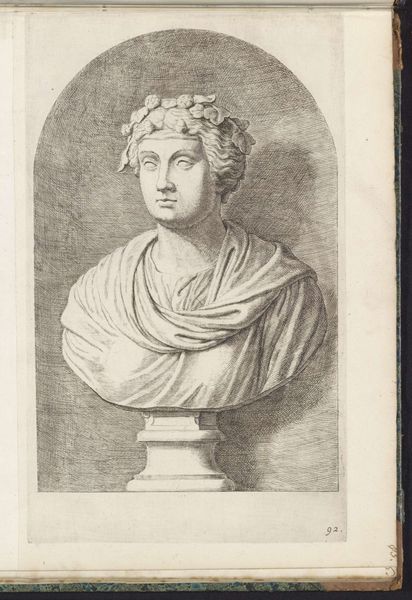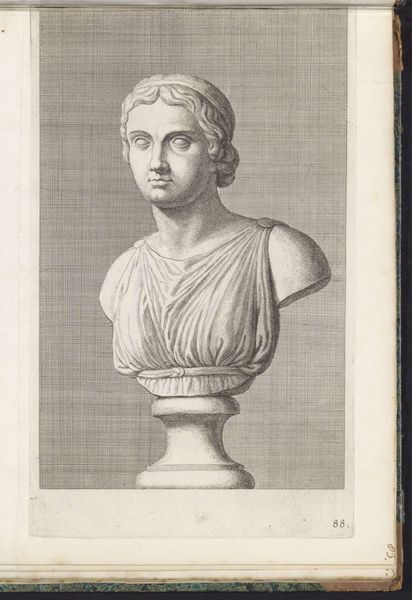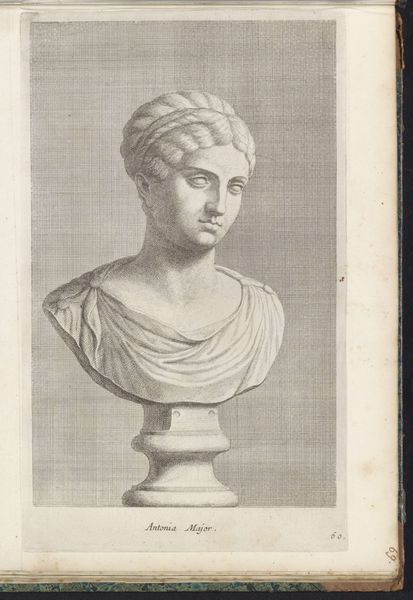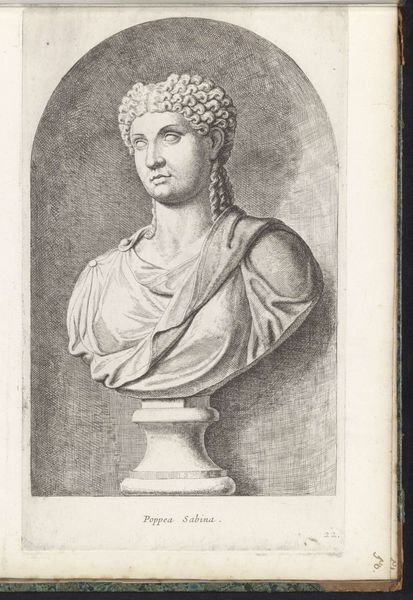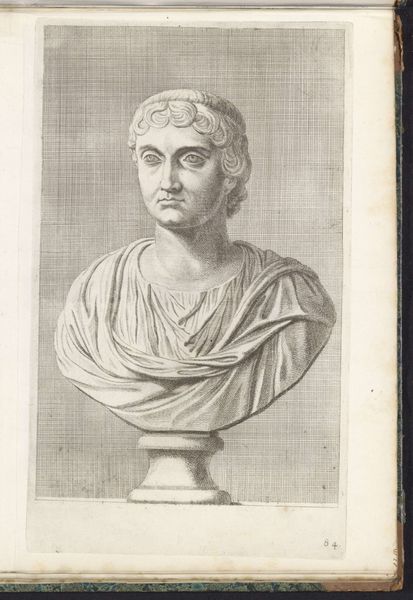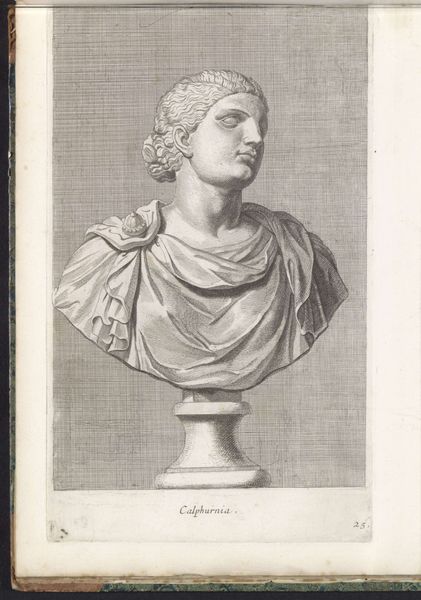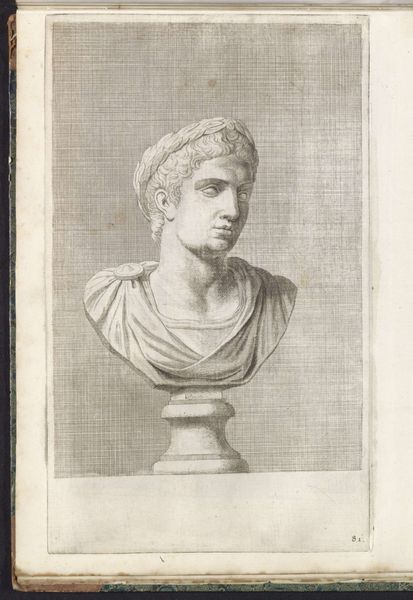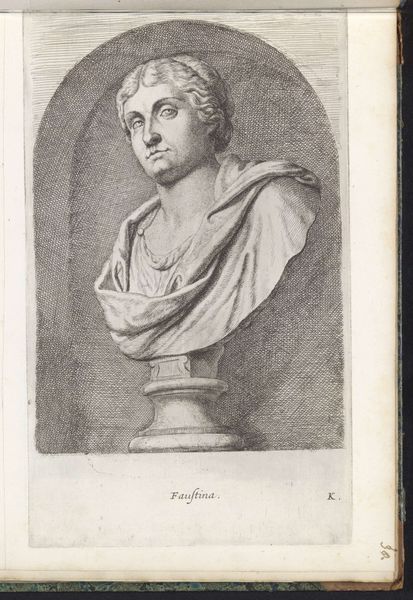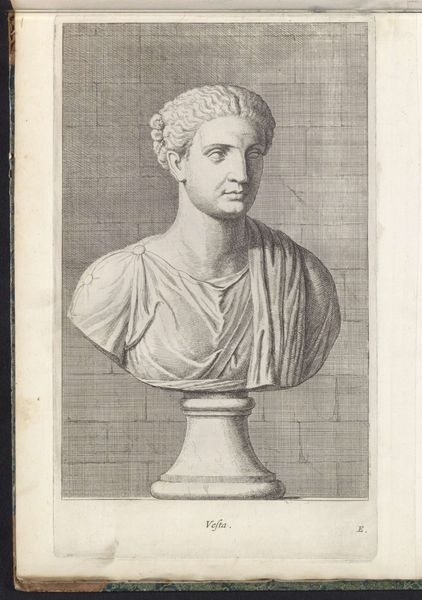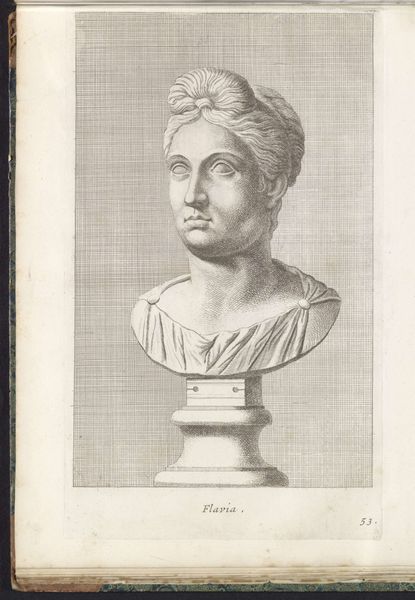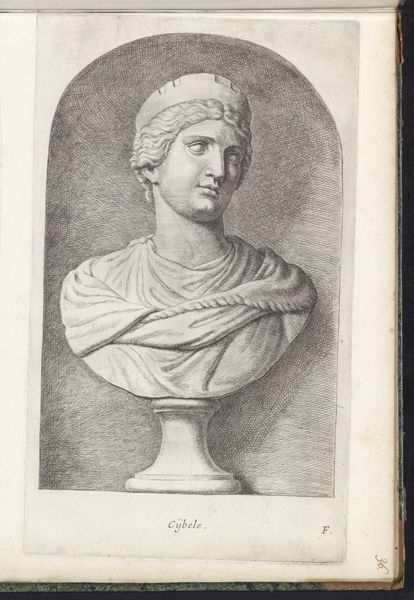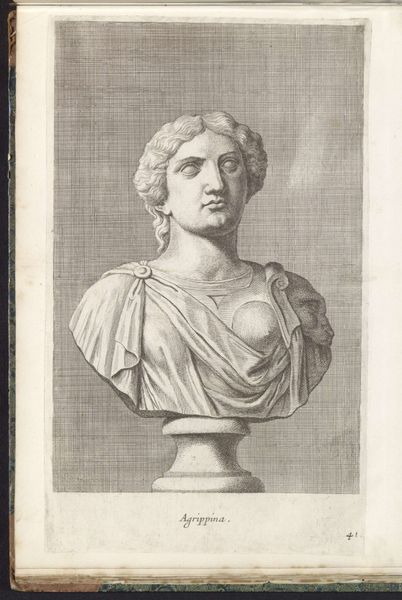
drawing, print, etching, engraving
#
portrait
#
drawing
# print
#
etching
#
pencil drawing
#
ancient-mediterranean
#
portrait drawing
#
engraving
Dimensions: height 325 mm, width 197 mm
Copyright: Rijks Museum: Open Domain
Curator: Hubert Quellinus created this engraving titled "Buste van keizerin Julia Mamaea", sometime between 1646 and 1670. It's currently held at the Rijksmuseum. Editor: What strikes me immediately is its somewhat detached coolness. It's a beautiful rendering, obviously, but there’s an almost clinical objectivity to the portrayal. The texture, the detail – it feels precise but…impersonal, somehow. Curator: That’s an interesting response. Julia Mamaea, of course, was a powerful Roman empress, the mother of Emperor Severus Alexander. What sort of message do you think Quellinus' symbols convey to the audience? Editor: The idealized face, the classic drapery – it all speaks to the conventional visual language of power. These symbols serve to legitimize her position within the historical record. It suggests an air of timelessness, maybe even to evoke her memory across centuries. But, honestly, I am skeptical of portraiture that only reinforces institutional memory because there is almost nothing spontaneous or lifelike about the print, do you think? Curator: That’s a fair point. The visual representation certainly contributes to that mythologizing. However, what about the act of creating prints like this itself? Disseminating her image beyond elite circles? Could that play a role in constructing not just her individual authority, but a collective memory around the idea of Roman power itself? Editor: That is definitely a possibility. Prints allowed the general population to know their emperor and families at a relatively low price. Did people understand the original sculpture was real or merely appreciate the portrait of an aristocrat? After all, prints were made with various art purposes; from decorative function, information, documentation, or a mix. Curator: Indeed. And in that sense, prints create this democratization and help perpetuate those mythologies. They shaped collective memories, influenced perception, and became political instruments as well. Editor: I find it so striking how even seemingly straightforward artistic choices— the monochrome palette, for instance, contributes so much to the work’s overall tone. It gives an idea of grandeur but somehow diminishes its immediacy, if you catch my drift. Curator: Yes. What appeared simple becomes complex. What was the image that Hubert Quellinus tried to perpetuate in this etching of Julia Mamaea. Now I can continue with this information in my role in iconographic curator! Editor: Precisely. It goes to show, you know, that a mere art piece has always a broader purpose than simply aesthetic experience. Fascinating!
Comments
No comments
Be the first to comment and join the conversation on the ultimate creative platform.
